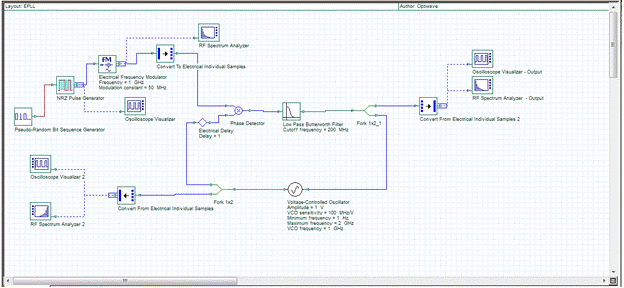
It is better to find this inverse analytically, rather than rely on numerical inversion at each stage. Second, the complete transfer across one layer boundary requires a matrix inverse. Real-valued implementation uses less computer resources. Since it is loss-less modes on a fiber of loss-less material that is being sought, there is no reason to include complex numbers in the formulation. The first improvement involves a reformulation of the basic equations to make a real-valued numerical implementation.

The 4×4 matrix method for vector modes in fibers is implemented with these improvements to make the algorithm faster in execution time, and more reliable in the finding of modes, particularly in cases where the modes are almost degenerate. The method used by the Optiwave fiber mode solvers is different from the previous works in three ways. In total there are four transverse components at the layer boundaries, so the transfer matrix in fiber is a 4×4 matrix, instead of 2×2. For vector fields in fibers, there is no natural separation into TE and TM polarization, so one must include the two tangential components for both electric and magnetic field simultaneously.

Both methods use a matrix to express the fields at one side of a layer given their values at the other side, and the whole structure is then characterized by cascading the layers by matrix multiplication. The method has intuitive appeal in its similarity to the transfer matrix method used for the analysis of planar waveguides. for a complete treatment) but probably the best choice for a general, quick algorithm is the method of Yeh and Lindgren. There are some choices to make about the best way to arrange the linear system (see Ref. Within any one of the concentric layers, the field components are all linear combinations of Ordinary and Modified Bessel functions, and the solution is a matter of matching the tangential field components of adjacent layers, leading to the solution of a linear system.

Optisystem waveguides full#
However, when the index contrast becomes larger, the LP approximation becomes inaccurate, and a full vector analysis is necessary. When the index contrast in the structure is small, it is common to use the scalar wave equation to obtain the linearly-polarized modes (LP modes).
Optisystem waveguides series#
Many kinds of optical fiber can be described, or in the case of graded index fibers, approximated by, a series of concentric layers of loss-less dielectric.


 0 kommentar(er)
0 kommentar(er)
